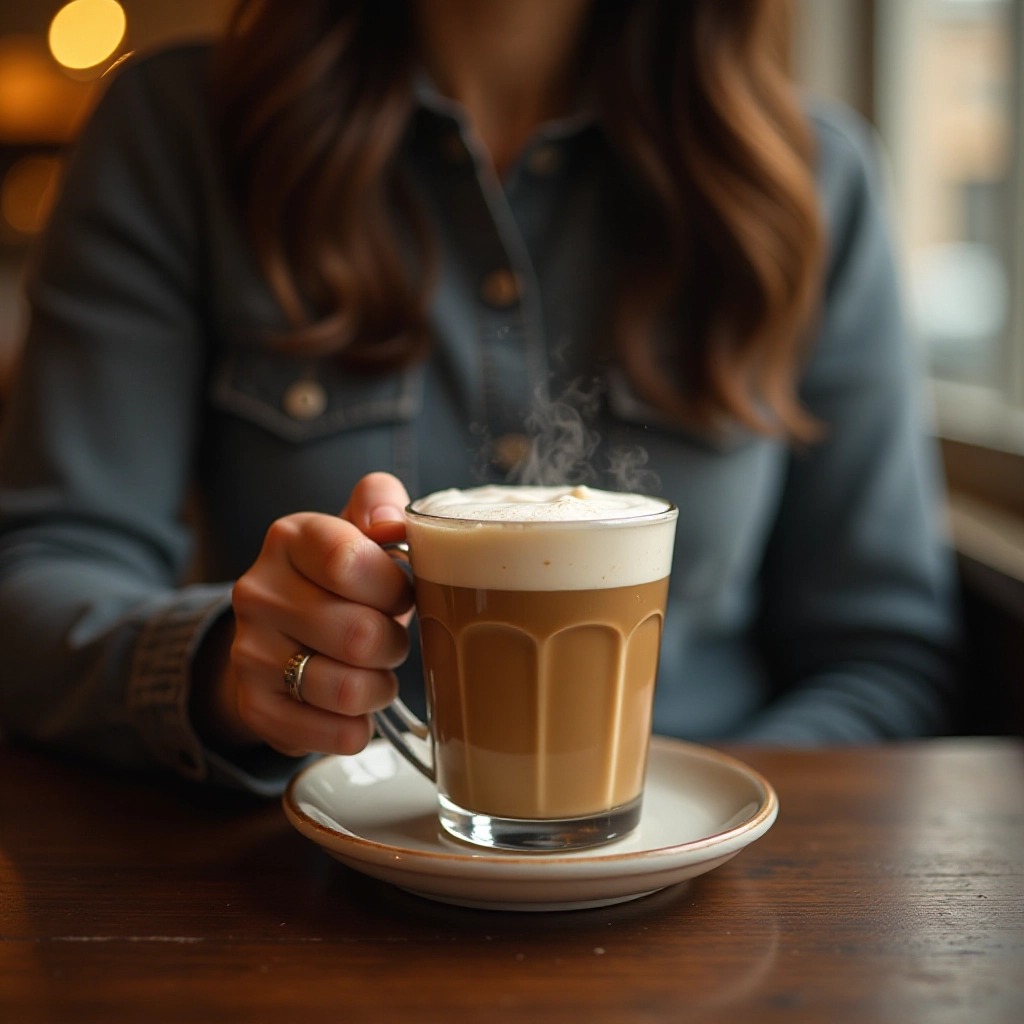Chai lattes have become a popular alternative to traditional coffee drinks, offering a unique blend of spices and creamy texture. But many wonder: how much caffeine is in chai latte?
Understanding the caffeine content is essential for those monitoring their intake. Whether you’re sensitive to caffeine or just curious, this guide will provide clarity.
Let’s delve into the details and uncover what makes chai lattes both delightful and energizing.
What Is a Chai Latte?
Unlike espresso-based drinks, chai lattes are tea-infused and typically offer a more subtle stimulant effect. The unique aroma and flavor profile make chai lattes a comforting choice, especially in colder months.

Caffeine Content in Traditional Chai
How much caffeine is in chai latte? The caffeine content in a chai latte primarily comes from the black tea base. On average, an 8-ounce serving contains between 30 to 50 milligrams of caffeine. This amount can vary based on the type of tea used and brewing methods.
For comparison, black tea alone contains about 47 mg of caffeine per 8-ounce cup, while chai—being a blend—can be slightly lower depending on how diluted it is with milk or water. Some homemade recipes may reduce caffeine further by using less tea or shorter brewing times.
Caffeine in Chai Latte vs. Regular Coffee
Comparatively, a standard 8-ounce cup of brewed coffee contains about 95 milligrams of caffeine. This means that chai lattes have roughly half the caffeine content of regular coffee, making them a milder option for those seeking less stimulation.
Espresso-based drinks like lattes and cappuccinos often contain more caffeine per ounce. For example, a single espresso shot contains about 63 mg. Therefore, a double-shot latte could have more than double the caffeine of a typical chai latte.
Does the Type of Tea Affect Caffeine Levels?
Yes, the type of tea used can influence caffeine content. While black tea is standard, some chai blends incorporate green or oolong teas, which have varying caffeine levels. Additionally, brewing time and tea concentration can affect the final caffeine amount.
Green tea, for example, has a lower caffeine range (20–45 mg per 8 ounces), so a green chai might be even less stimulating. On the other hand, using Assam or Darjeeling teas—known for their stronger caffeine kick—can raise the caffeine in your chai latte.
From Cafés: How much caffeine is in Chai Latte?
Café-prepared chai lattes often use concentrated mixes or syrups. For instance, a 12-ounce chai latte from a popular coffee chain may contain approximately 70 milligrams of caffeine. It’s essential to note that recipes can vary between establishments.
Some coffee shops may use a chai concentrate with added caffeine or prepare a “dirty chai” by adding a shot of espresso, which dramatically increases the caffeine content—sometimes up to 130 mg or more per serving.
Iced Chai Latte and Its Caffeine Profile
Iced chai lattes typically have similar caffeine content to their hot counterparts. However, the dilution from ice can slightly reduce the caffeine concentration per sip. Nonetheless, the overall caffeine intake remains comparable.
Because iced versions are often more concentrated in flavor to compensate for melting ice, you might end up consuming a similar amount of caffeine even in a smaller volume.
Decaf and Herbal Chai Options
For those sensitive to caffeine, decaffeinated chai lattes are available. These versions use decaf tea or herbal blends, resulting in minimal to no caffeine content. Always check with the café or product label to ensure it’s truly caffeine-free.
Herbal chai options, made with rooibos or chamomile, replicate the spiced flavor of chai without the stimulant effect. These are great for evening consumption or for those avoiding caffeine for health reasons.
Health Considerations: Is Chai a Good Alternative?
How much caffeine is in chai latte? Chai lattes offer health benefits from their spices, such as anti-inflammatory properties. With lower caffeine than coffee, they can be a suitable alternative for those reducing intake. However, be mindful of added sugars and calories in some preparations.
The spices commonly found in chai, such as ginger and cinnamon, are known to support digestion and improve circulation. When made with plant-based milk and less sugar, chai lattes can be a nutritious part of your diet.
Tips for Managing Caffeine Intake
- Opt for smaller serving sizes.
- Choose decaf or herbal chai options.
- Limit additional shots of espresso in your drink.
- Monitor your overall daily caffeine consumption from all sources.
- Substitute high-caffeine drinks with chai to gradually reduce dependency.
- Make your chai from scratch to control the strength and ingredients.
Making a Low-Caffeine Chai Latte at Home
Creating a chai latte at home allows control over caffeine content. Use decaffeinated tea bags and natural sweeteners. Experiment with spice blends to suit your taste without relying on pre-made mixes.
Here is a simple homemade recipe:
Ingredients:
- 1 decaf black tea bag (or rooibos)
- 1/2 cup water
- 1/2 cup milk (any type)
- 1/4 tsp ground cinnamon
- 1/4 tsp ground ginger
- Pinch of cardamom and cloves
- 1 tsp honey or maple syrup
Instructions:
- Boil water with spices for 3–5 minutes.
- Add tea bag and steep for another 3–5 minutes.
- Warm the milk separately and froth if desired.
- Combine the tea with milk and sweetener.
- Stir and enjoy your low-caffeine chai latte.
You can also batch your spice mix ahead of time to make prep even easier.
Final Thoughts
Understanding how much caffeine is in chai latte empowers you to make informed choices. Whether you’re seeking a gentle energy boost or aiming to reduce caffeine, chai lattes offer versatility and flavor. Enjoy them mindfully as part of your daily routine.
As with any drink, moderation is key. But thanks to its balanced profile, the chai latte remains a flavorful, comforting, and often healthier option for tea and coffee lovers alike.

















